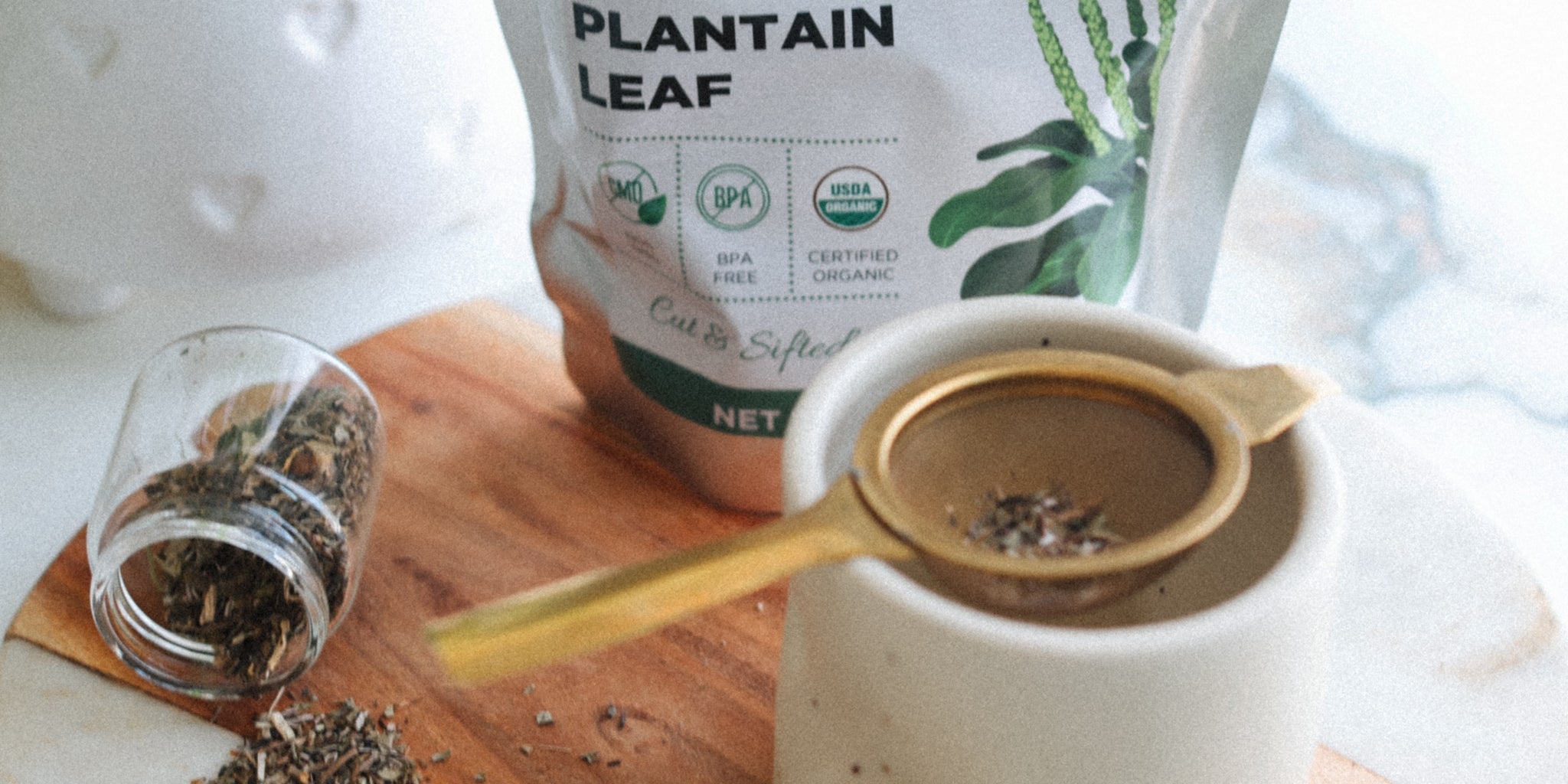If you’ve ever paused to pick up a leaf of Plantago major, commonly known as plantain, you’ve met one of nature’s most versatile and humble herbal allies. Though often dismissed as a lawn weed, plantain leaf is a powerful, time-honored remedy, used across cultures to soothe, heal, and replenish. It has a deeply rich history and impressive healing properties, and can be used for multiple different ailments.
Plantain is native to Europe and parts of Asia, but has now spread across the globe—earning nicknames like “white man’s footprint” in indigenous North American traditions because it flourished wherever settlers traveled.
For centuries, it's been used:
-
As a wound remedy: Ancient Europeans and Native Americans applied fresh plantain poultices to cuts, insect bites, and minor burns to stop bleeding, reduce swelling, and prevent infection.
-
For respiratory issues: Folk traditions in Central and Eastern Europe used it to soothe coughs, bronchitis, hay fever, and throat irritation.
-
In digestive and urinary remedies: As a mild astringent and soothing agent, it has been used for diarrhea, bladder irritation, and detox teas.
Its universality across continents speaks to its reliability. When people needed safe, effective medicine, plantain leaf was always within reach.
Plantain leaf contains several key bioactive compounds with medicinal effects:
-
Mucilage: Forms a soothing gel that coats tissues, making it excellent for skin, throat, gut, and respiratory comfort.
-
Iridoid glycosides (e.g., aucubin): Known for anti-inflammatory and antimicrobial properties.
-
Allantoin: Promotes cell regeneration and wound healing.
-
Tannins: Provide astringent benefits, helping to stop minor bleeding and dry out irritations.
Modern science affirms these traditional uses. Studies show plantain leaf has anti-inflammatory, antimicrobial, and wound-healing effects (vitalibrary.com). Its mucilage also soothes coughs and inflamed tissues in the gut and airways.
Here are three simple, effective preparations you can make at home with fresh or dried plantain leaf:
1. Plantain Tincture
A potent, easy-to-use extract for internal or external use.
Ingredients:
-
Fresh or dried plantain leaves, finely chopped
-
High-proof alcohol (e.g., vodka)
-
Dark glass jar with lid
Steps:
-
Fill the jar halfway with leaves.
-
Cover with alcohol, leaving 1″ headspace.
-
Seal and shake daily for 4–6 weeks.
-
Strain through cheesecloth, bottle the liquid.
-
Label with plant and date; store in a cool, dark place (potent for ~3 years)
Use:
-
Internally: 1 dropper (about 1 mL) in water for digestive, respiratory, or urinary support.
-
Externally: Diluted in water for a wound wash or applied carefully as a spot treatment.
2. Plantain Infusion (Tea)
A shortcut to comfort for your throat or tummy.
Ingredients:
-
1–2 tsp dried plantain (or 1-2 Tbsp fresh leaves)
-
8 oz hot (not boiling) water
Steps:
-
Place herbs in a cup.
-
Pour hot water over and steep for 10–15 minutes.
-
Strain and drink up to 3 times a day.
Benefits:
-
Soothes sore throats, respiratory irritation, mild coughs.
-
Coats and calms the gut during digestive upset.
3. Plantain Salve
A healing balm for skin scrapes, bug bites, dryness, and minor wounds.
Ingredients:
-
1 cup dried plantain
-
1 cup carrier oil (olive, jojoba, etc.)
-
1–2 tbsp beeswax (for consistency)
Steps:
-
Infuse oil and plantain in a double boiler or crockpot for 4–6 hours, low heat.
-
Strain and gently reheat the oil.
-
Melt in beeswax until combined.
-
Pour into jars, cool, and label.
Use:
Apply topically to wounds, rashes, insect bites, burns, eczema—anywhere that needs soothing healing.
Each of these methods tap into plantain’s healing power in different ways:
-
Tincture is concentrated, long-lasting, and versatile.
-
Infusion is quick and gentle.
-
Salve allows topical application for skin resilience and repair.
It’s common to combine them—drinking the tea for internal balance, using the tincture during sickness, and applying salve during outdoor hikes or injury.
Plantain Safety Notes
-
Generally safe with low side-effect risk .
-
Avoid during pregnancy/breastfeeding, or if on blood-thinners—consult a provider.
-
For fresh harvests, wash thoroughly and avoid polluted areas.
-
If persistent wounds or infection occur, seek professional medical care.
Plantain leaf is generally easy to find, simple to prepare, and tremendously effective. In tinctures, teas, and salves, it brings soothing relief, healing comfort, and a reconnection to our herbal roots.
By incorporating plantain into your daily herbal toolkit, you embrace centuries of nature wisdom—right from your backyard. I hope this inspires you to forage, create, and honor the power of this quiet, caring plant.




